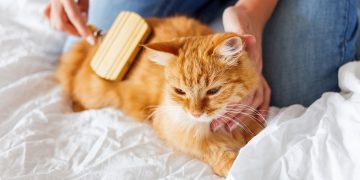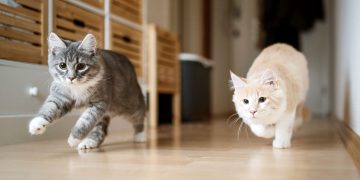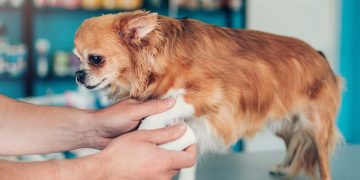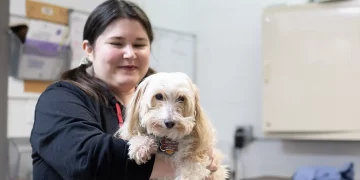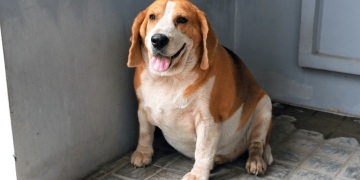When pet parents think about improving obedience or teaching new tricks, their minds often jump to one thing: repetition. But beneath the clicker, the praise, and the patience lies a powerful, often overlooked element—your pet’s diet. Training success doesn’t depend solely on consistency or technique. It also depends on how well your pet can focus, maintain energy, respond to cues, and feel rewarded. All of these are shaped by what they eat. Whether you’re training a puppy to sit, reinforcing a recall command in an adult dog, or shaping behavior in a rescue cat, nutrition is part of the foundation. It fuels the brain, impacts mood, and even determines how rewarding your rewards actually feel. In 2025, as pet parents seek more mindful and science-informed approaches to care, understanding the direct link between food and behavior is key to unlocking a more effective and enjoyable training experience.
How Nutrition Impacts Attention and Energy
Just like humans, animals need balanced energy to learn and focus. Poor nutrition can lead to hyperactivity, sluggishness, short attention spans, or inconsistent behavior. For dogs, in particular, training sessions rely on being mentally alert but physically calm—a balance that starts in the food bowl.
Carbohydrates fuel energy, but the quality and quantity of those carbs matter. High-glycemic foods (like corn-heavy kibble or sugary treats) can cause sudden spikes in energy followed by crashes. These crashes affect focus, making pets more distracted or irritable mid-session.
Proteins are critical for neurotransmitter production, especially dopamine, which is involved in reward processing and motivation. A low-protein diet or one with poor-quality protein sources can dull your dog or cat’s enthusiasm for reward-based learning.
Fats, especially omega-3 fatty acids, support brain health and emotional stability. Pets who are deficient in essential fatty acids may appear anxious, inattentive, or stubborn—not because they’re “bad learners,” but because their brain isn’t firing on all cylinders.
Micronutrients like B vitamins, zinc, magnesium, and iron are also essential for healthy nerve function and emotional regulation. Dogs and cats with imbalanced homemade diets or excessive fillers in their commercial food may be underperforming in training due to mild, unrecognized nutritional gaps.
The Role of Gut Health in Behavior and Learning
Emerging research continues to strengthen the link between gut health and brain function in pets. The gut-brain axis—a communication pathway between the gastrointestinal system and the brain—is active in dogs and cats as well as humans. When gut flora is imbalanced, pets may experience not only digestive upset but increased anxiety, mood swings, or difficulty concentrating.
Probiotics and prebiotics in the diet help maintain a stable microbiome. Pets with healthy digestion tend to exhibit better behavior, respond more calmly to stress, and maintain interest in longer training sessions. If your pet is prone to nervousness, environmental reactivity, or moodiness, adding probiotic support through food or supplements may enhance their ability to learn.
High-Reward vs. Low-Reward Treats: Why It Matters
Not all treats are created equal—and when it comes to training, reward potency matters. A “high-reward” treat is one your pet finds irresistible, often moist, smelly, and rich in fat or protein. A “low-reward” treat is more neutral, less fragrant, and typically dry or crunchy.
During the early stages of learning or when trying to reinforce difficult behaviors (like leash reactivity or staying calm during distractions), high-value treats increase motivation and strengthen positive associations. Think of it like comparing a plain cracker to a bite of bacon—you’d show up early and focused for the bacon.
Many store-bought treats are either overloaded with sugars and starches or too bland to drive learning. Ideally, high-reward treats should be:
- Soft, so they don’t interrupt training flow
- Small enough to be given repeatedly without overfeeding
- Nutrient-dense to support overall health, not just empty calories
Examples include bits of boiled chicken, liver, freeze-dried salmon, or commercially available single-ingredient treats. In contrast, low-reward treats (like biscuit-style cookies or kibble pieces) may work for easy behaviors or maintenance training but may not cut it for real behavior shaping.
When Poor Diet Undermines Training
The clearest signs that nutrition is interfering with training often show up as behavioral inconsistency. Your pet may perform well one day and poorly the next, resist cues despite knowing them, or seem bored and disengaged.
Here are common training issues tied to dietary causes:
- Short attention span: Often caused by high sugar or low-quality carb content leading to energy spikes and crashes.
- Food disinterest: May stem from nutrient imbalance, boredom with treats, or gut health issues.
- Over-excitement or frustration: Can come from too many high-calorie or artificial ingredients, leading to hyperactivity.
- Stress-reactive behaviors: May be intensified by low omega-3 levels or poor digestive health.
- Inconsistent performance: Might indicate fluctuating blood sugar or discomfort from poor food digestion.
In these cases, reassessing your pet’s base diet—not just the training treats—can unlock greater consistency. A switch to a balanced, species-appropriate diet often improves mood, digestion, and willingness to participate.
Training Senior Pets: Why Diet Becomes Even More Crucial
Senior pets can learn new tricks, but they may need extra dietary support. Older animals process food differently and can suffer from inflammation, joint stiffness, or cognitive decline. Diets rich in antioxidants, joint-support nutrients (like glucosamine), and omega-3s can help keep them mentally sharp and physically able to engage with training routines.
Dogs with early cognitive dysfunction may benefit from MCT oils or brain-health supplements, while senior cats often need extra hydration and easily digestible proteins to keep their energy stable during training.
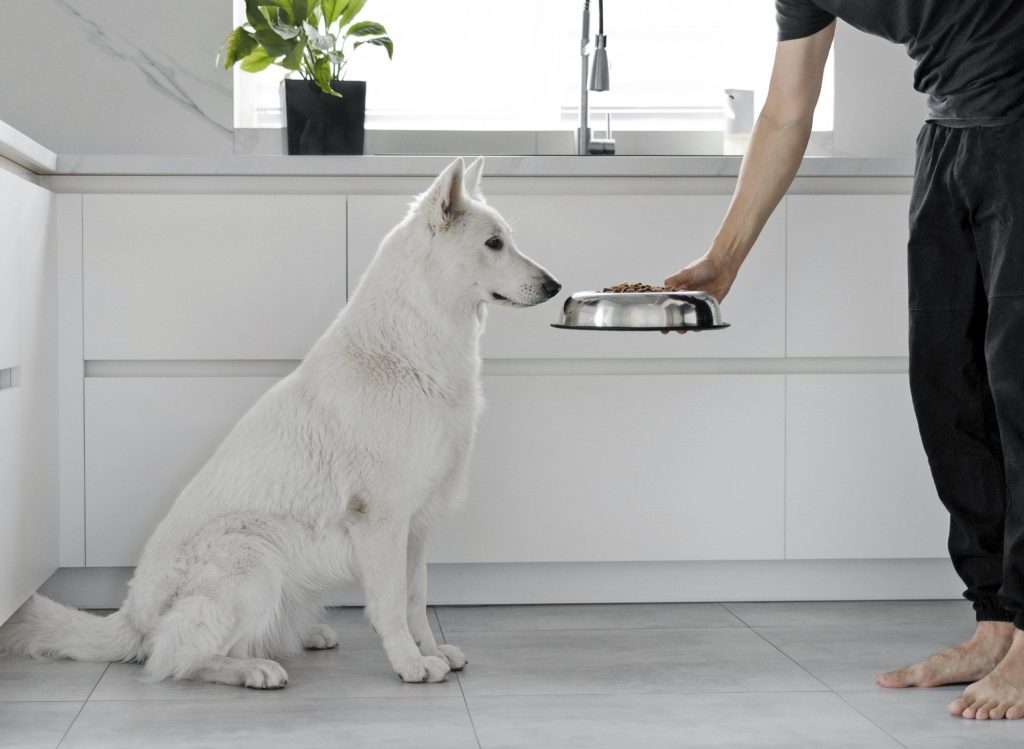
Cats and Training: Making Food Motivation Work
Many people assume cats can’t be trained. In reality, they can—but only if the reward is truly meaningful. Cats tend to be more selective in their motivators, and dietary quality makes all the difference. If your cat gets low-quality food with artificial flavors all day, it’s harder to find a treat that feels “special” enough to use in training.
Use foods that smell strong and appeal to your cat’s carnivorous instincts—like tuna, chicken, or freeze-dried liver. Pair this with short training bursts and watch how food-based motivation can shift your cat’s behavior and engagement.
Using Mealtime as Training Time
Another strategy that blends nutrition and behavior shaping is turning mealtime into a training session. Instead of free-feeding or dumping a bowl of kibble, use your pet’s regular food allowance during structured interactions:
- Scatter feeding for nose work or focus games
- Hand-feeding for eye contact, calmness, or impulse control
- Puzzle feeders or slow bowls to reinforce problem-solving
This not only strengthens your pet’s mental stimulation but also builds value into the food they already eat—reducing the need for extra treats and preventing weight gain.
Tips for Choosing Training-Friendly Pet Foods
If you want your pet’s base diet to support behavior training, look for the following qualities:
- High-quality protein as the first ingredient
- No artificial colors, sugars, or flavor enhancers
- Moderate fat and low filler content
- Probiotic and prebiotic support for digestion
- Omega-3-rich ingredients for brain health
- No heavy grains that slow digestion or create lethargy
If you feed a raw or homemade diet, be extra cautious about balancing vitamins and minerals. Work with a veterinary nutritionist to ensure your pet’s brain and body are getting what they need for optimal learning.
Training for Weight Loss or Special Diets: What Changes?
Pets on weight-loss plans or therapeutic diets can still train effectively—you just need to be strategic with rewards. Use part of their daily food allowance as training reinforcement and choose treats that align with their diet goals.
For example, overweight dogs can train with low-calorie treats like air-dried green beans, tiny pieces of carrot, or specially formulated low-fat meat bites. Cats on renal diets may respond to wet food spoon-fed during training.
The key is consistency. Use a food log if necessary to track treat calories and ensure the total intake remains within dietary limits.
Final Thoughts: Feeding for Behavior, Not Just Fuel
Training is about shaping the mind, and diet is the fuel that powers it. The connection between food and behavior goes far beyond the treat bag—it’s embedded in your pet’s energy, brain chemistry, motivation, and even emotional resilience. If your pet struggles to learn or stay focused, consider that what they’re eating every day might be the silent saboteur. By adjusting their diet to include nutrient-dense meals, gut-supporting ingredients, and meaningful, high-value training rewards, you’ll not only get better behavior—you’ll build a stronger, happier, and more trusting relationship with your animal companion.



